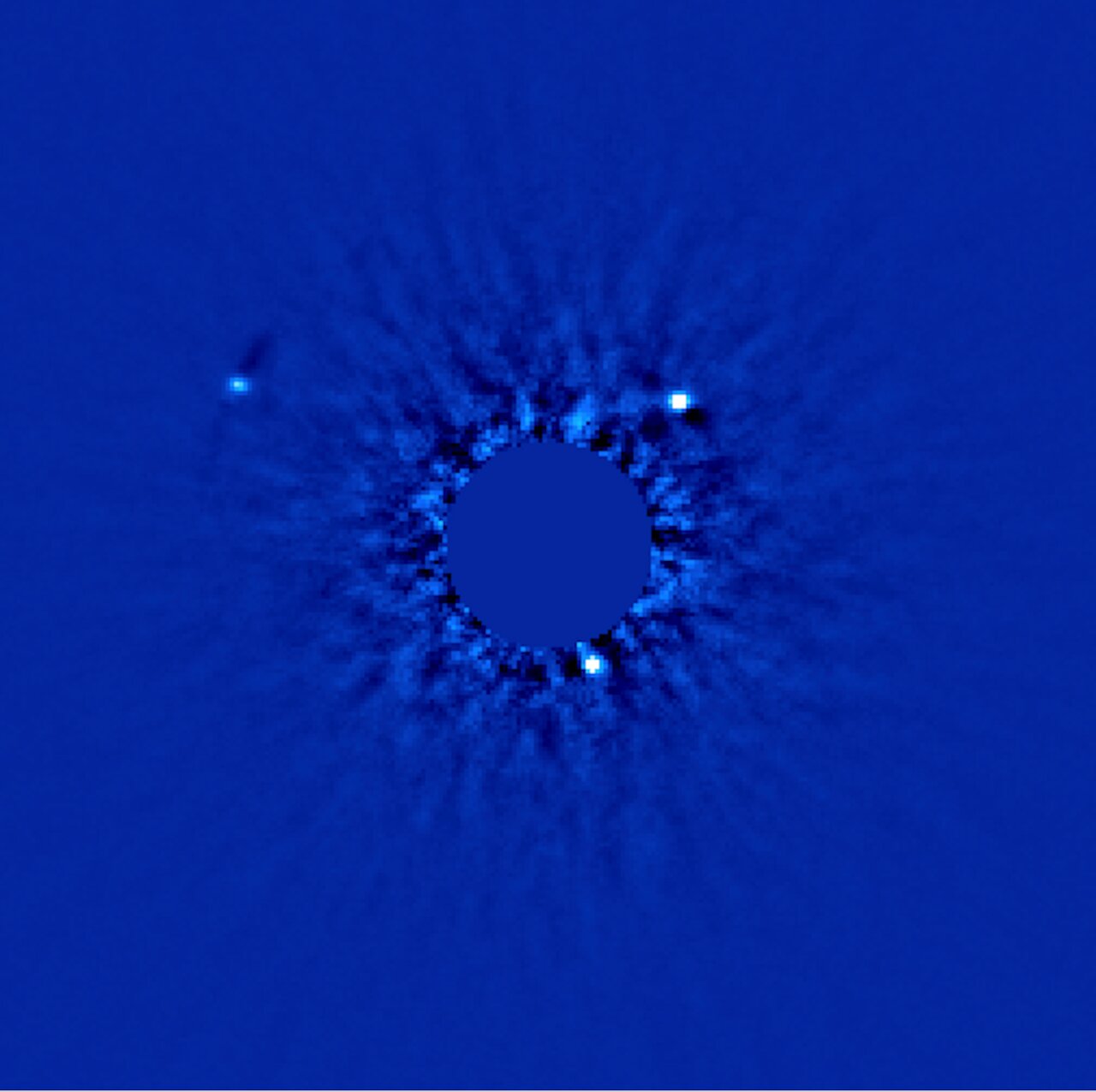Near-InfraRed Imager (NIRI)
0NIRI mounted on the left-side port of Gemini North telescope
Please note, NIRI is decommissioned.
The Near-Infrared Imager (NIRI), developed by the University of Hawaii’s Institute for Astronomy, is the primary near-infrared imager at the Gemini North telescope on Maunakea, capable of detecting wavelengths ranging from 1.0 to 5 micrometers.
In its imaging mode, NIRI has three available cameras with the following focal ratios: f/32, best for the 2.5−5 micrometer range and has a 22” x 22” field of view; f/14, has a 51” x 51” field of view (in the M band); and f/6 (AO not available), best for the 1−2.5 micrometer range and has a 120” x 120” field of view. Along with its three cameras, NIRI also has a large number of broad- and narrow-band filters. Its spectroscopy capability is currently decommissioned and not available for use.
NIRI can either be used alone or with the ALTAIR adaptive optics system to correct for distortion caused by Earth’s atmosphere. ALTAIR requires the use of a natural guide star (NGS) or a laser guide star (LGS) to measure atmospheric distortions. In NGS mode, a real star provides information for the deformable mirror as well as the overall image motion for tip and tilt. It works best with guide stars up to 12th magnitude but can handle stars as faint as 15th magnitude. In LGS mode, a laser-created guide star provides information for the deformable mirror while a nearby star as faint as magnitude 17.5 (up to 18.5 in the darkest conditions) can be used for tip and tilt.
First direct images of a planetary family around a normal star using NIRI
Science Highlights of NIRI
- Gemini Gets Lucky and Takes a Deep Dive Into Jupiter’s Clouds
- First Directly Imaged Planet Confirmed Around Sun-Like Star
- Gemini Observatory Releases Image of Most Distant Known Object in Universe
- Gemini Releases Historic Discovery Image of Planetary "First Family"
- NIRI Catches the Infrared Glow of a Major Neutron Star Outburst
- Gemini's Near-Infrared Imager Images Over 120,000 Stars in the Nearby Galaxy M33
Quick Facts
|
|
Near-Infrared Imager (NIRI) |
|
|
Site |
Maunakea |
|
Telescope |
Gemini North |
|
Type |
Imager |
|
Wavelength range |
1−5 µm |
|
Spatial resolution: |
Depends on Camera F/6: 0.1171” per pixel F/14: 0.0499” per pixel F/32: 0.0219” per pixel |
|
Number of detectors |
1 ALADDIN detector array |
|
Detector format |
1024 x 1024 pixel format |
|
Detector total size |
27,648 square micrometers |
|
Spectral resolution: |
Spectroscopy decommissioned |
|
Field of view |
Depends on Camera F/6: 120” x 120” F/14: 51” x 51” F/32: 22” x 22” |
|
Filters |
Over 25 broad- and narrow-band filters |
|
Date of first light |
July 2001 |
|
Science Goals |
General purpose near-infrared imager (supplementary spectroscopic capabilities have been decommissioned) |
|
Images taken with the instruments |
|
|
Images of the instrument |
|
|
Videos of the Instrument |
|
|
Press releases with the instrument |
|

